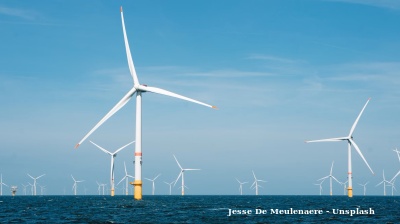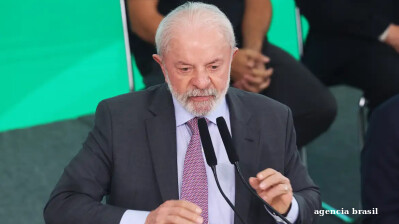US, Brazil lead the charge in global carbon capture, but current capacity is a fraction of what’s needed

At COP28 big oil offered a solution to reducing emissions that would allow them to continue to pump and burn fossil fuels: carbon capture and storage (CCS).
The delegates went on say that emissions from “non-abated” carbon emissions would have to be reduced, but those where the CO₂ could be captured could be continued. The problem is that CCS is a young technology and very little carbon can be captured at present. As a result, emissions are currently at an all-time high, and if anything the rate of emissions is accelerating.
Last year only two countries accounted for the majority of CCS: the US and Brazil. However, China added to its credentials as the global green energy champion by adding more CCS capacity than any other country.
The US and Brazil accounted for a combined 60% of global capacity, according to The Energy Institute’s 2024 Statistical Review of World Energy.
|
Global CCS capacity leaders |
||
|
Country |
Capture Capacity, Mt Per Year (2023) |
Capture Capacity, Share (2023) |
|
US |
22.5 |
40.9% |
|
Brazil |
10.6 |
19.3% |
|
Canada |
4.0 |
7.3% |
|
Australia |
4.0 |
7.3% |
|
China |
3.5 |
6.4% |
|
Qatar |
2.3 |
4.1% |
|
Norway |
1.7 |
3.1% |
|
Saudi Arabia |
1.3 |
2.4% |
|
Algeria |
1.2 |
2.2% |
|
Russia |
0.4 |
0.8% |
|
Rest of the World |
3.5 |
6.2% |
|
Total |
55 |
100% |
|
sources: The Energy Institute |
||
That sounds like good news, but the volume of CCS remains very small. The International Energy Agency (IEA) estimates the word needs to be able to remove at least one gigatonne of CO₂ from the atmosphere annually by the deadline to reach carbon zero.
The global carbon capture capacity in 2023 remains far away from these sort of levels. CCS amounted to a mere 55mn tonnes – two orders of magnitude less than needed – and the two top CCS countries captured only 33mn tonnes combined.
Currently the US has more CCS plants than any other country, while Brazil has only one operational plant, but that is enough to make it a world leader. Combined, these two countries accounted for 60% of all CCS capacity in 2023.
The world’s saviour again may be China, which is rapidly rolling out new CCS capacity far faster than any other country. As reported by bne IntelliNews, the world may have passed peak emissions in 2023, but if that proves to be true then it will all be down to China, which is also thought to have passed peak emissions last year thanks to its massive roll-out of renewable energy capacity, especially solar.
"The largest growth in carbon capture capacity year [on] year came from China, whose capacity more than tripled from 1.1mn tonnes to 3.5mn tonnes," the report said.
While there is progress, the scale of the CCS capacity is so small there is little point in differentiating winners and losers at this stage. More worryingly, the pace of growth in CCS is clearly insufficient to reach a scale necessary to achieve the IEA’s goal of removing a gigatonne of carbon a year any time soon.
The world’s CCS capacity grew by 6.6% in 2023, but according to the IEA, this rate must almost double to 11% annually to meet the 2050 target. "At that pace, we will not reach the net-zero target for carbon capture until 2070," the report warns.
The technology used in carbon capture is vital for industries that are difficult to decarbonise, or “abate”, such as air travel, cement manufacturing and metallurgy. Most of the current CCS infrastructure uses post-combustion technology, which captures carbon from power plant exhaust. Pre-combustion technologies are also in use, separating CO₂ from fossil fuels before combustion. One promising innovation is calcium looping, a technique under development for cement plants. As the IEA notes, "calcium looping removes carbon dioxide from the flue gases of a cement plant using a calcium oxide sorbent, and has the potential to decarbonise cement manufacturing."
Achieving the necessary scale in carbon capture faces several hurdles. The IEA has cited cost as the primary barrier preventing the expansion of CCS infrastructure. As the agency explains, "some countries will need more than others, as only one-third of CO₂ capture is projected to come from advanced economies." Additionally, private funding for CCS projects is falling short, and the IEA insists that government intervention will be critical if the world is to meet its climate goals. "The IEA urges the public sector to step in where private funding falls short."

bneGREEN

Malaysia–Vietnam offshore wind project to deliver 2,000 MW by 2034, strengthening regional green energy links
Malaysia’s upcoming offshore wind project connecting Vietnam to Peninsular Malaysia is expected to generate up to 2,000 megawatts (MW) of clean energy by 2034, marking a major step in the nation’s renewable energy expansion

EBRD invests €16.8mn in Croatia’s first large-scale battery storage and virtual power plant
Development bank to take its first equity stake in a standalone merchant storage project.

Kyrgyzstan says neighbours “upset” by country’s lack of water
“This year we were supposed to overcome shortages, but instead, they have intensified,” deputy head of cabinet tells Uzbekistan and Kazakhstan.

EXPLAINER: What is the EU’s CBAM and how will it affect global trade from 2026?
The European Union’s Carbon Border Adjustment Mechanism (CBAM) will enter its full operational phase on January 1, 2026, marking a major shift in global climate and trade policy.


_Foto2_Divulgação_Foresea_(1)_1761062969.jpg)
